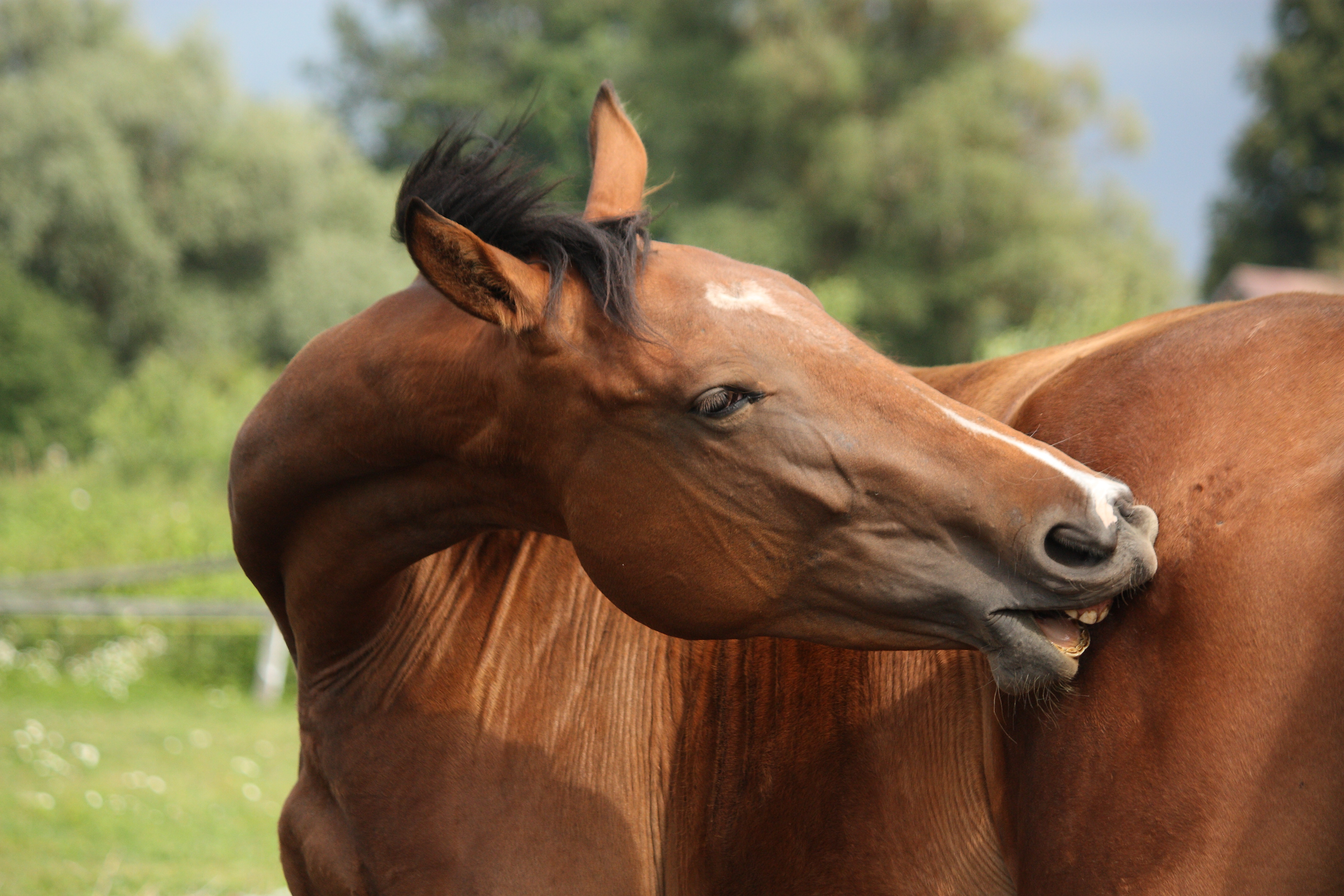Vaccine against sweet itch shows promise
- June 3, 2021
- ⎯ Christine Barakat with Mick McCluskey, BVSc
Swiss researchers are developing a vaccine to reduce the severity of insect bite hypersensitivity (IBH)—an itchy and persistent immune reaction to bites of certain tiny gnats that occurs in some horses.

The vaccine targets interleukin 5 (IL-5), a substance produced by the horse’s immune system. “IL-5 is the master-regulator of white blood cells called eosinophils,” explains Antonia Fettelschoss-Gabriel, PhD, of the University Hospital Zurich. “Eosinophils are well known to play a role in allergic reactions. These cells contain large granules with toxic enzymes that, once released, are capable of causing massive tissue destruction.”
When a horse with IBH is bitten by a Culicoides midge, the insect’s saliva triggers an immune reaction that leads to eosinophil infiltration into the skin. “Eosinophils become activated and release their cell content due to the underlying allergic immune response, which in turn causes tissue damage of the skin and leads to the typical IBH lesions,” says Fettelschoss-Gabriel. IBH causes intense itchiness so horses often rub raw the affected areas—typically their midline, chests, crests and top of the tail.
The vaccine works by tricking the body into identifying IL-5 as a foreign invader to be neutralized. To accomplish this, researchers attached IL-5 to a protein from an unrelated virus. “These [proteins] are foreign to the horse’s immune system, so they are able to efficiently activate it … and produce antibodies against self,” says Fettelschoss-Gabriel. “This is a well-known phenomenon in immunology called hapten-carrier complex.”
To test the vaccine, the researchers selected 34 healthy Icelandic Horses, a breed known to be susceptible to IBH. Nineteen horses were given a series of IBH vaccinations: one at the start of the study, and then four, eight, 12 and 20 weeks later. The remaining 15 horses received sham vaccines on the same schedule to serve as controls.
Initially, the researchers found that all but two of the vaccinated horses had developed antibodies to IL-5. Over the course of a year, eight of the vaccinated horses (47 percent) showed a 50 percent reduction in clinical signs of IBH, such as itching and skin irritation, and four of the vaccinated horses (21 percent) had a 75 percent drop in IBH signs. During the same time period, only two (13 percent) horses in the control group improved by 50 percent and none showed a 75 percent reduction in IBH signs.
The goal of the vaccine is to control but not eliminate eosinophil action in IBH, because the cells perform other essential functions, explains Fettelschoss-Gabriel: “A basal level of eosinophils remained—the vaccine did not completely abolish eosinophil production.”
Eosinophils support immune responses against parasites, so the researchers determined the parasite burden in the study horses before and after receiving the vaccine to see whether that function was affected.
“We did not see an increase [in internal parasites] in vaccinated horses when compared to placebo horses. Meanwhile, we have horses treated with this vaccine for three years and have not found a positive correlation with parasite burden,” says Fettelschoss-Gabriel, adding that while this study was based on Icelandic Horses, subsequent clinical trials using horses of other breeds produced similar results. She says regulatory studies must still be done before the IBH vaccine can be brought to the market; she estimates that it may be available by 2021.
Reference: “Treating insect-bite hypersensitivity in horses with active vaccination against IL-5,” Journal of Allergy and Clinical Immunology, April 2018
Don’t miss out! With the free weekly EQUUS newsletter, you’ll get the latest horse health information delivered right to your in basket! If you’re not already receiving the EQUUS newsletter, click here to sign up. It’s *free*!





